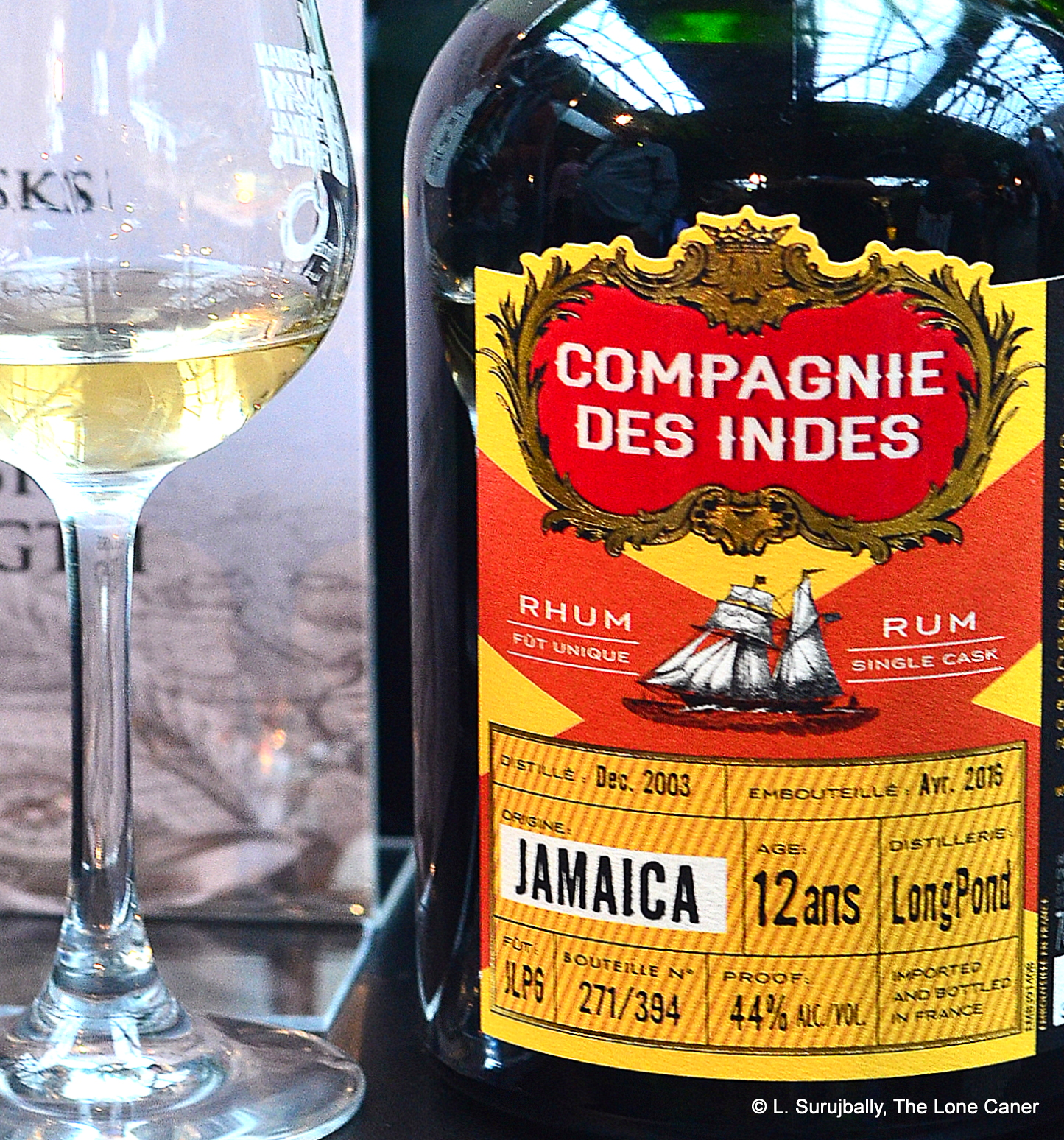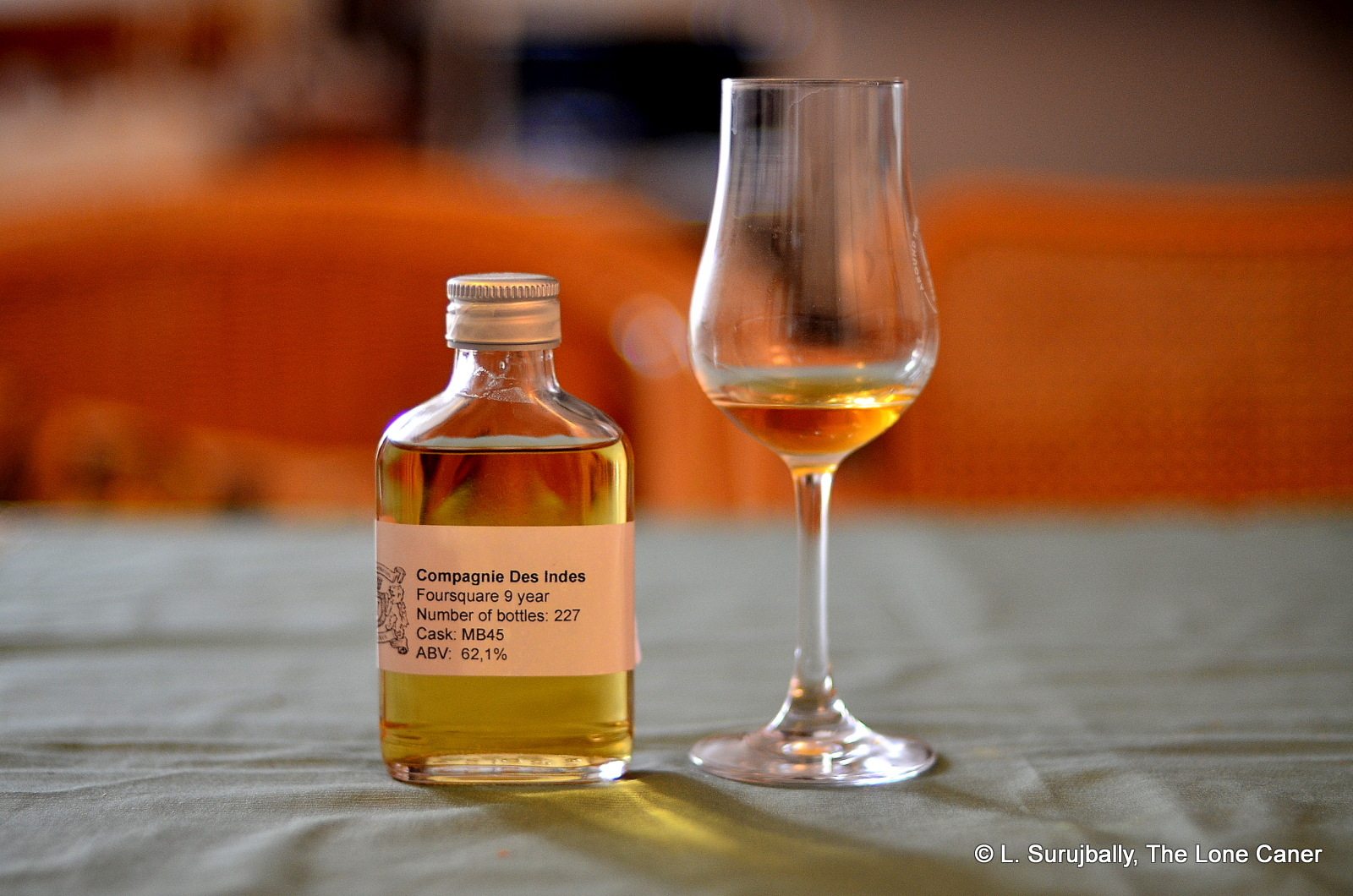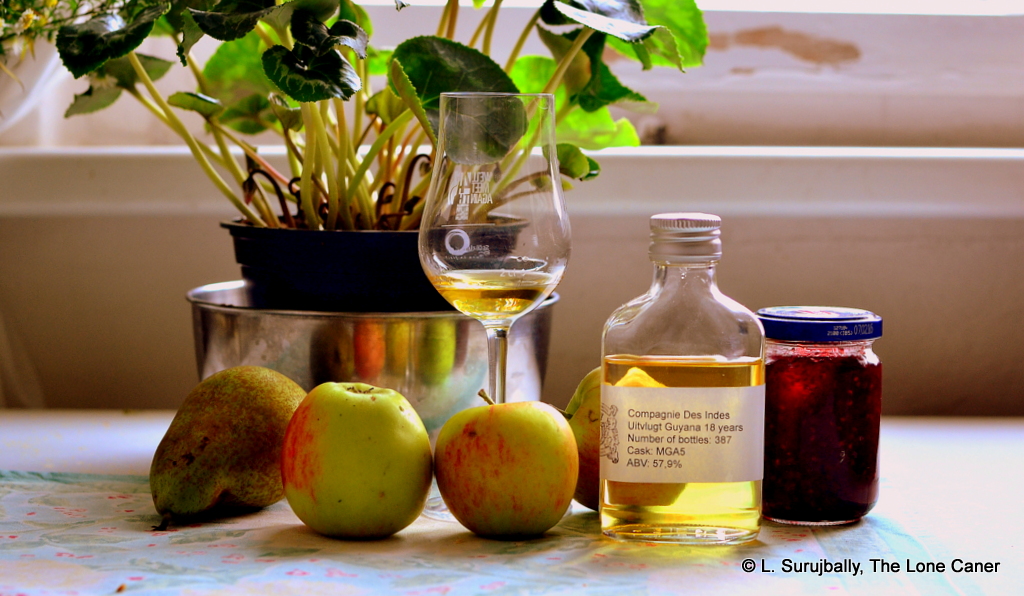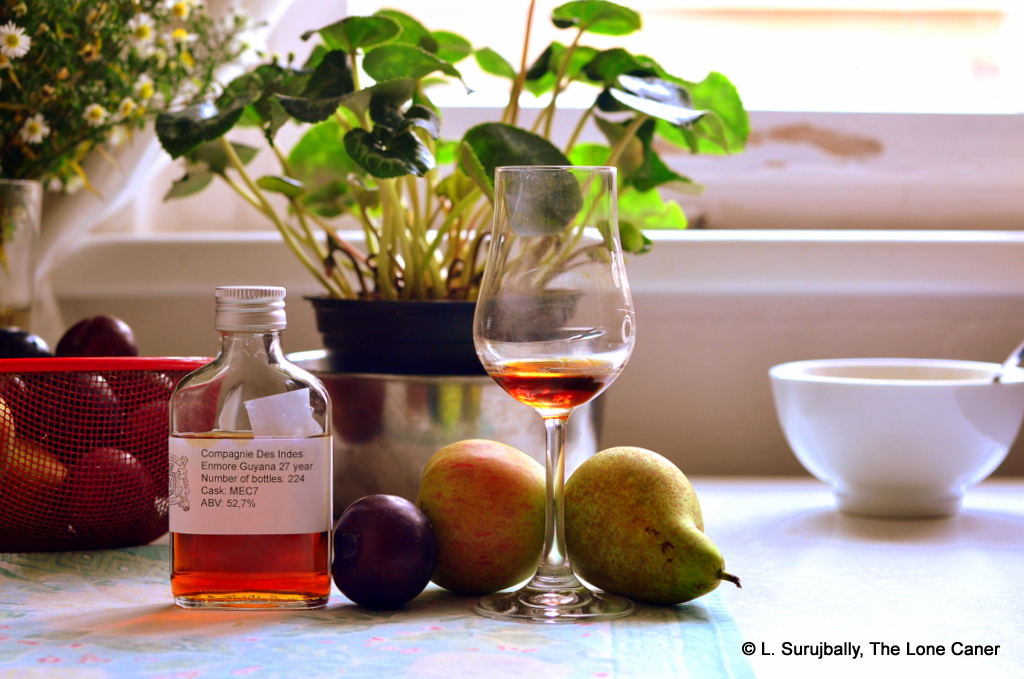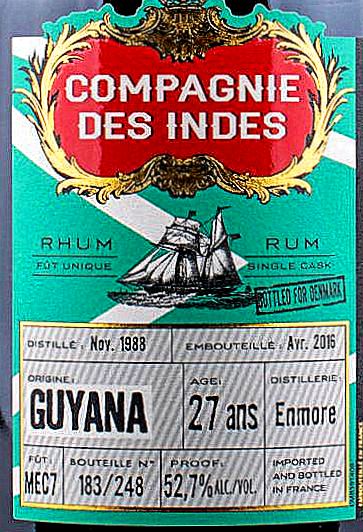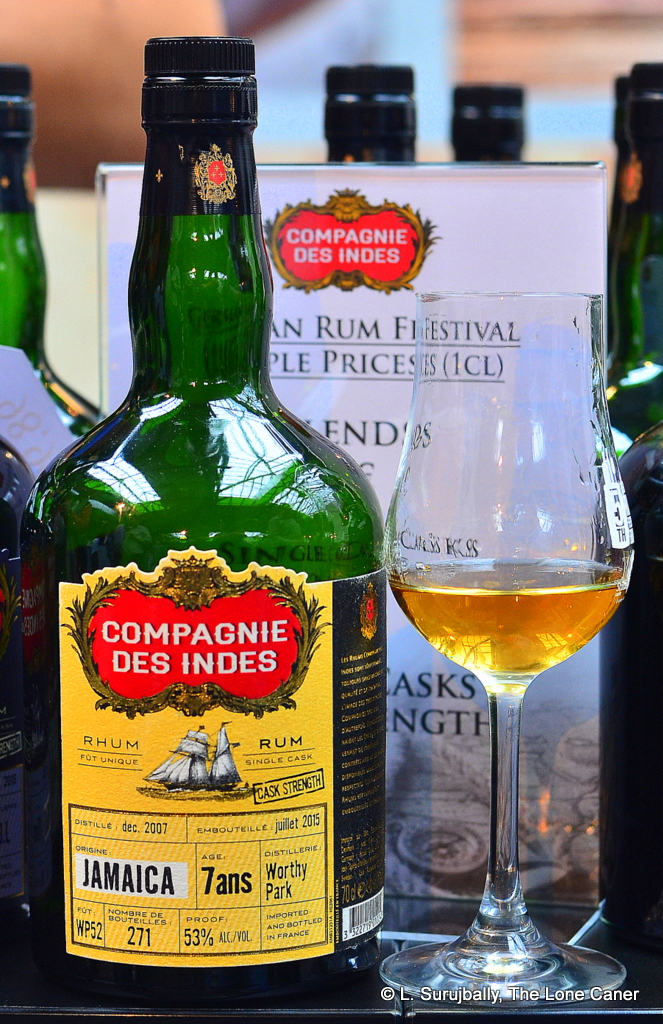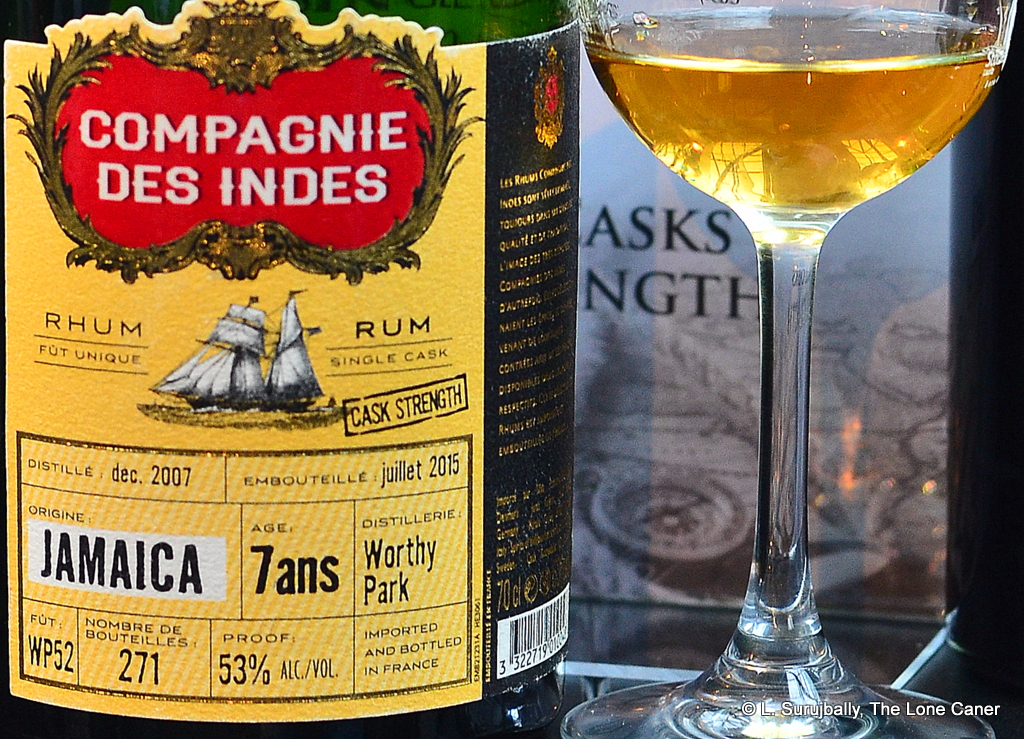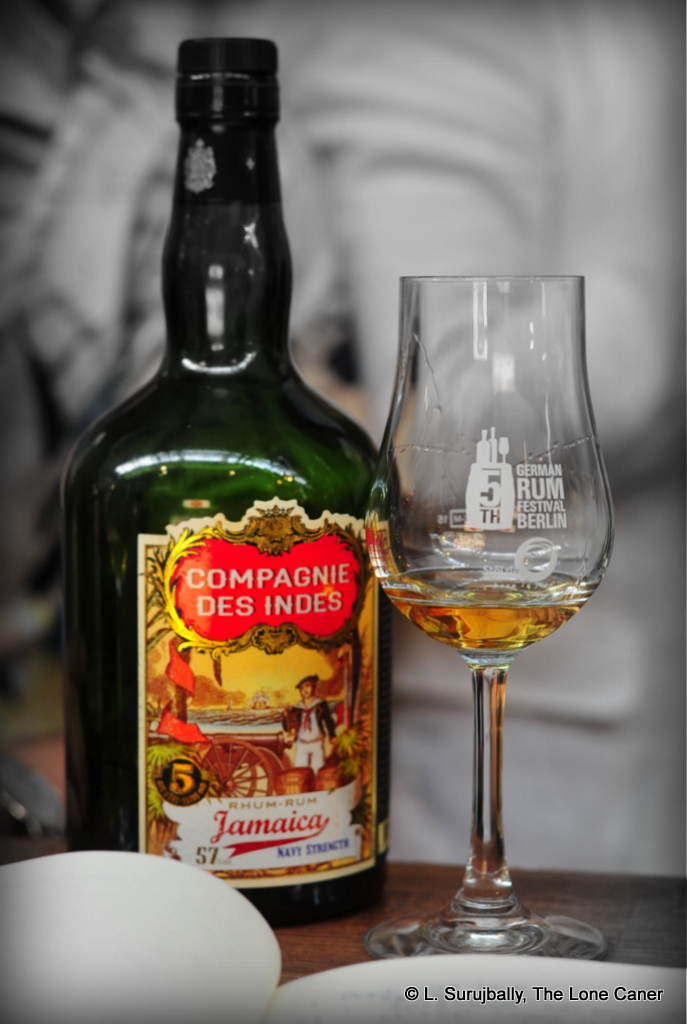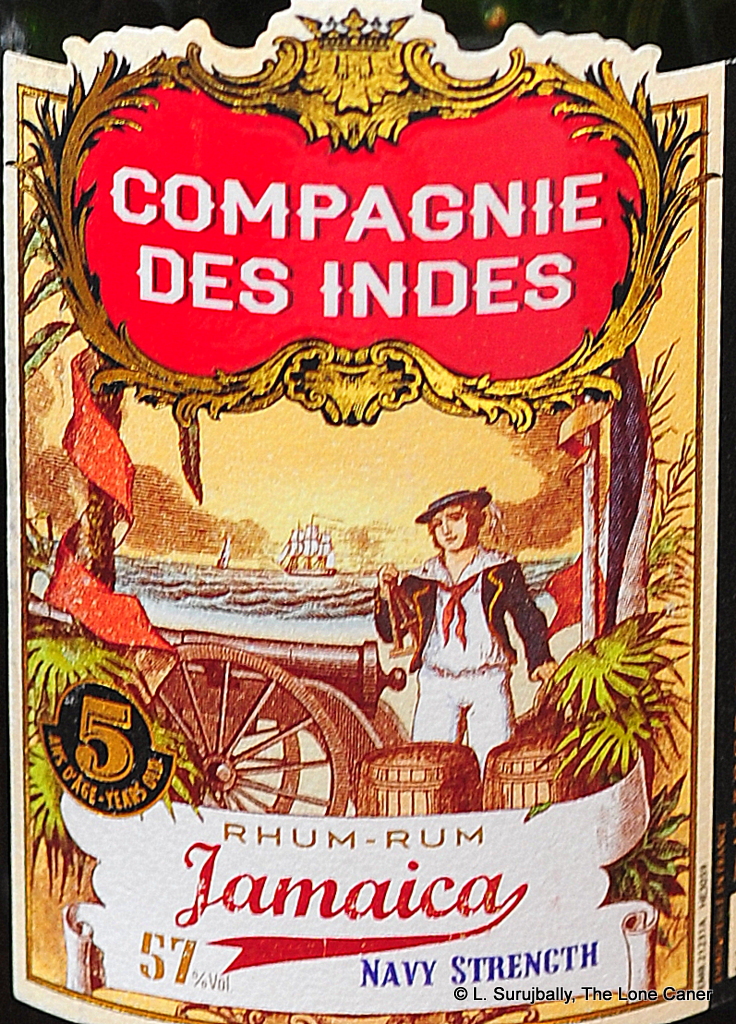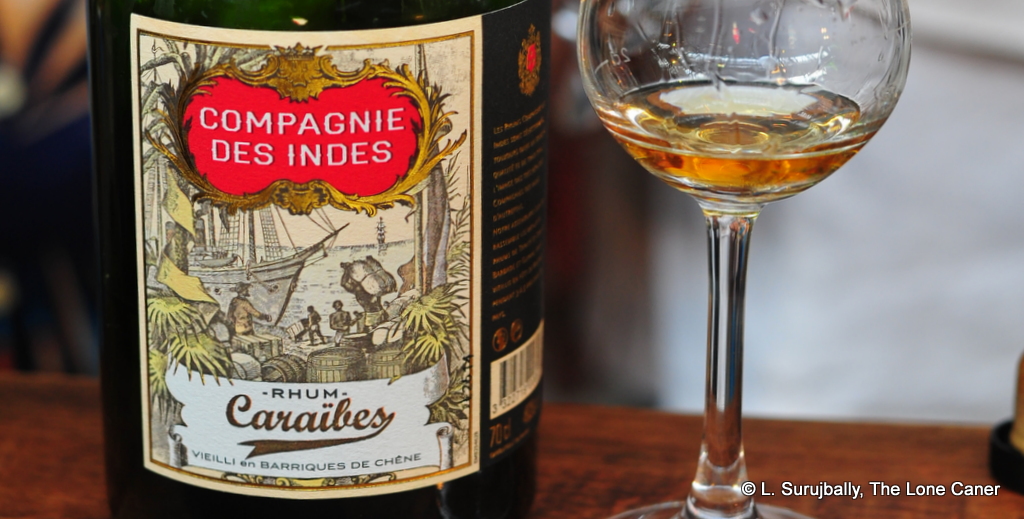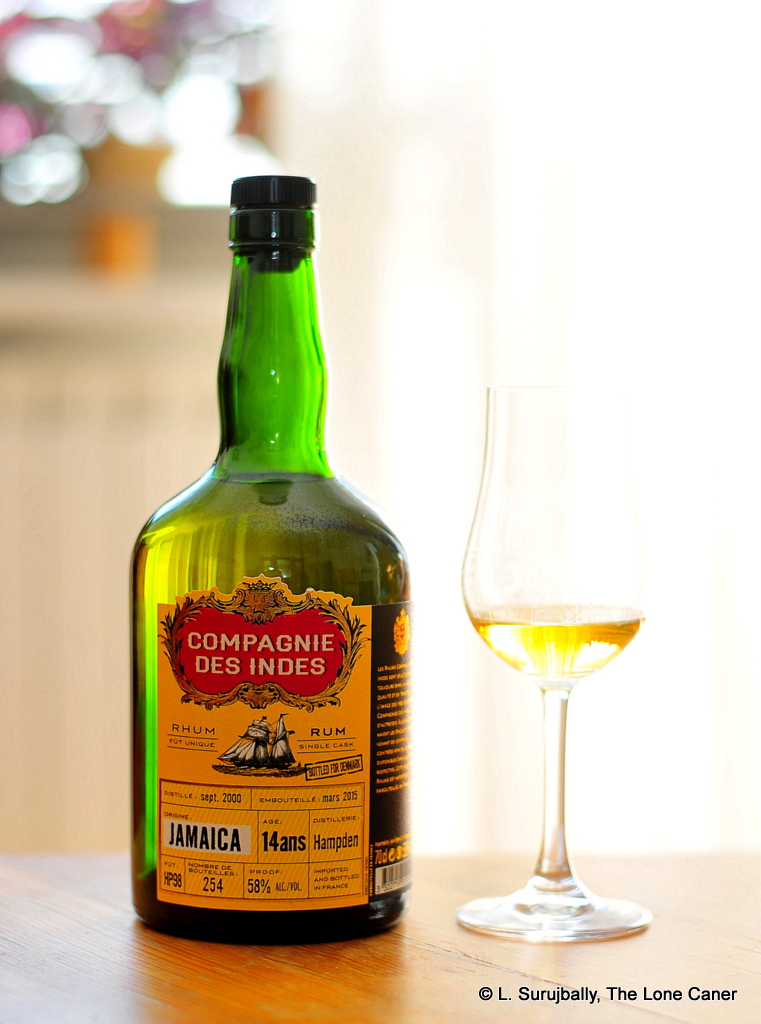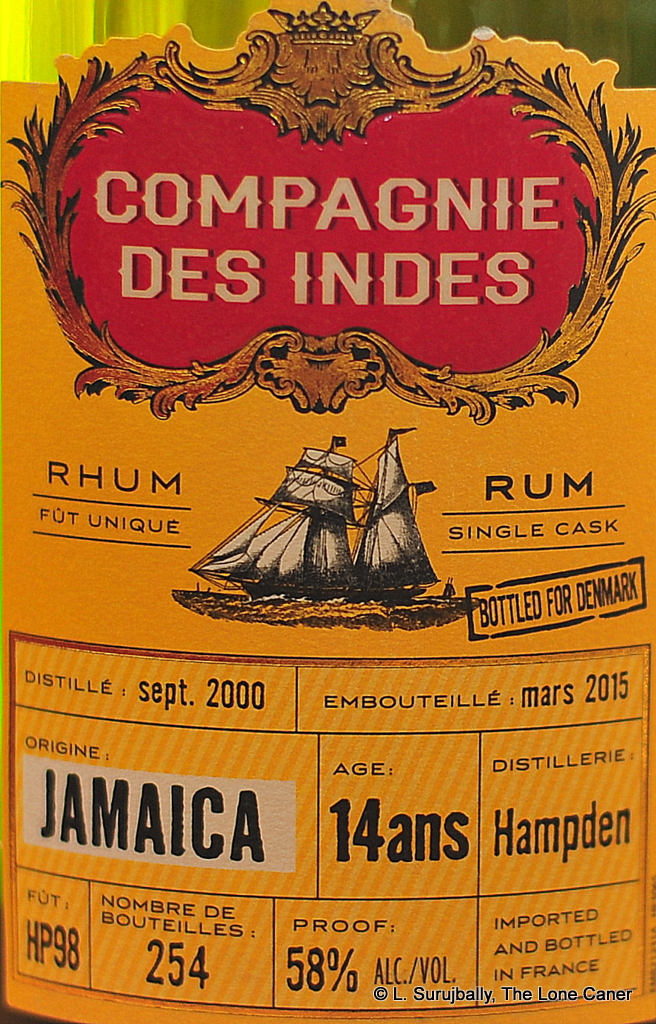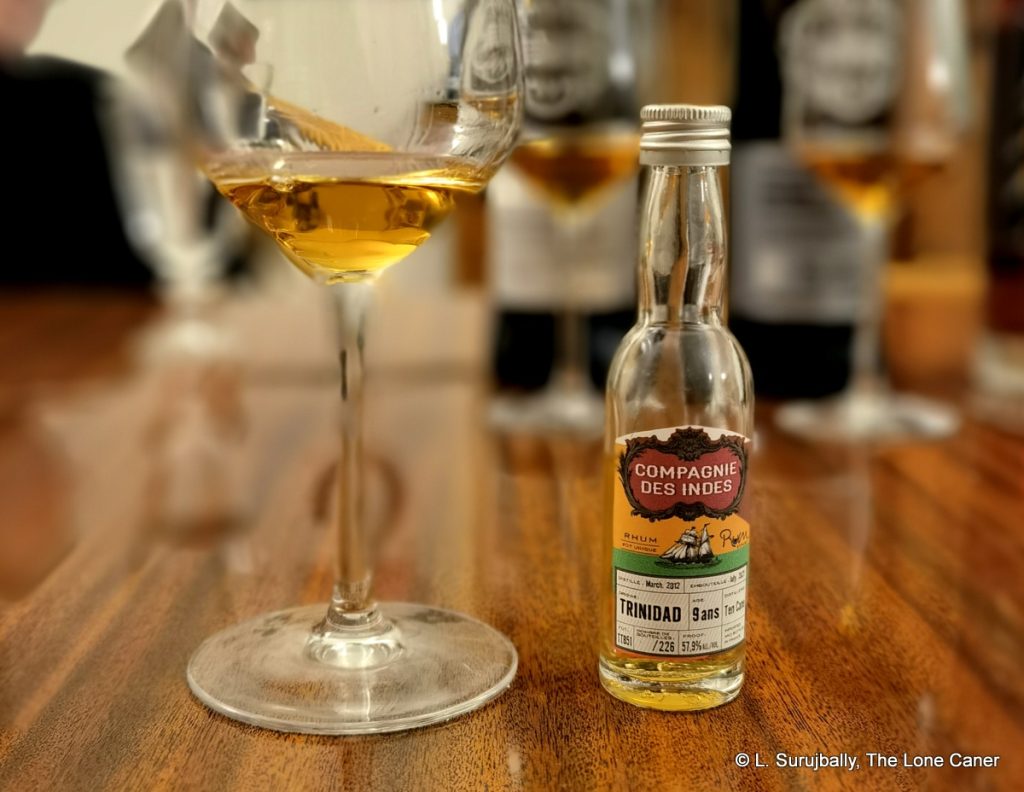
The rumisphere is littered with the detritus of small companies and experiments that started off well and then just gave up and died at the side of the road. The original and the new Renegade company, Toucan, Nine Leaves, all those small British merchant bottlers from decades past, they all bear witness to efforts that sadly could not be sustained, leaving us poorer than before. It’s usually economics, of course, but here with the Ten Cane brand, one would have thought the deeper pockets of the parent company might have allowed it to find its feet and establish a better market presence – alas, this never happened.
Ten Cane is the brainchild of LVMH (Louis Vuitton Moet Hennessy, home of the bags Mrs. Caner lusts after and beggars me to buy), who had the excellent idea to make artisanal rums in Trinidad by shipping over a pair of copper charentais pot stills from France in 2003, and making cane juice rums at Usine St. Madeleine together with Angostura (who provided logistical support and facilities).
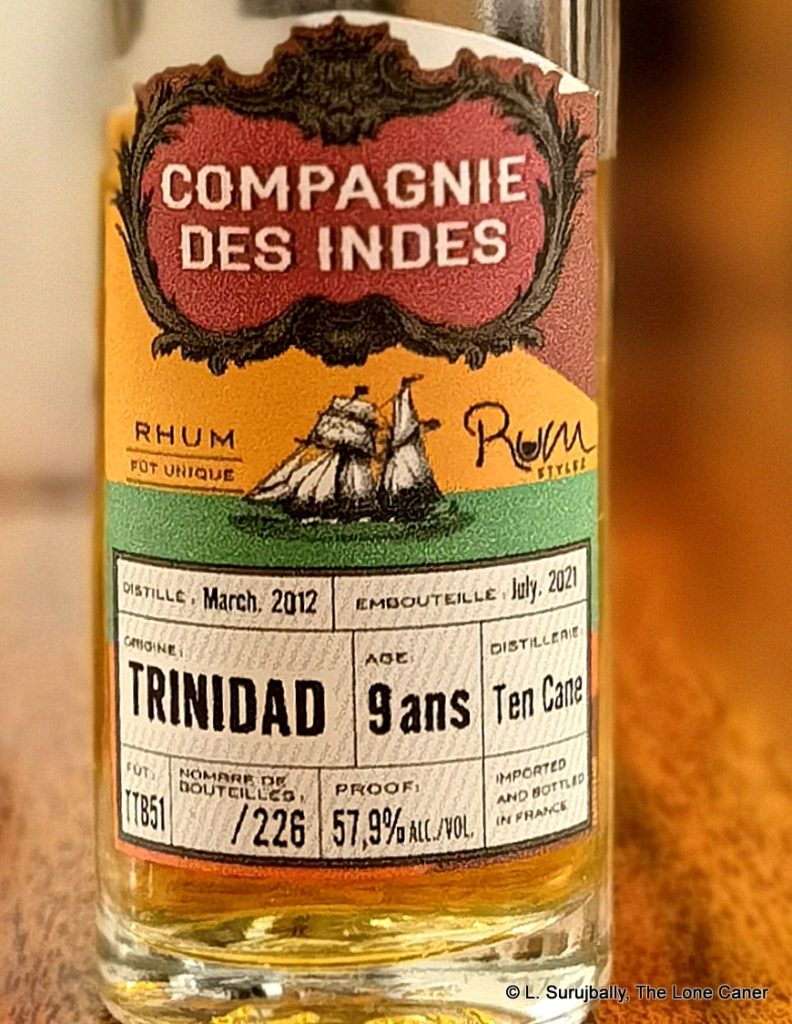 The idea was a good one and I still feel they were a little ahead of their time – the rum renaissance had not yet hit its peak – but clearly the sales were less than what was hoped for, and even after they started doing a blend of molasses and cane juice rums under the Ten Cane moniker, as well as shipping bulk to Europe for indie bottlers to work with, it didn’t pay off. In 2015 they ceased operations altogether and the remaining stock of ageing barrels were shipped over to Foursquare, and then Europe. We can still find various expressions around the indie circuit, but they are getting less all the time, and now knowledge of the brand is limited mostly to aficionados, or the odd post here or there about some dusty bottle found somewhere. Oh, and as an aside, those cognac pot stills were left to gather dust, until San Juan Artisanal Distillery in Puerto Rico outfit saw their potential and bought them to ship to their own distillery, a few years after Ten Cane folded.
The idea was a good one and I still feel they were a little ahead of their time – the rum renaissance had not yet hit its peak – but clearly the sales were less than what was hoped for, and even after they started doing a blend of molasses and cane juice rums under the Ten Cane moniker, as well as shipping bulk to Europe for indie bottlers to work with, it didn’t pay off. In 2015 they ceased operations altogether and the remaining stock of ageing barrels were shipped over to Foursquare, and then Europe. We can still find various expressions around the indie circuit, but they are getting less all the time, and now knowledge of the brand is limited mostly to aficionados, or the odd post here or there about some dusty bottle found somewhere. Oh, and as an aside, those cognac pot stills were left to gather dust, until San Juan Artisanal Distillery in Puerto Rico outfit saw their potential and bought them to ship to their own distillery, a few years after Ten Cane folded.
All this then leads us to one of the earlier indies from the 2010s, Compagnie des Indes, based in France, run by that very likeable chap Florent Beuchet. Although he made his name with single cask bottlings for which the company remains best known, its the blends like Tricorne or Darklice or Caraibes or Latino which keep the lights on – much as many other indies have been doing to subsidize their more exclusive high proof single cask bottlings. This edition of the Ten Cane distillate was made in 2012 and bottled in 2021. It’s a single cask expression of 226 bottles, issued at a solid 57.9% and apparently all cane juice source.
Tried in conjunction with the Rum Artesanal Trinidad TDL 2002 19YO (review coming soon to the site near you), it snaps into focus with an aroma of dry, briny and dusty aromatic notes, with a nice background of less-sweet figs, dates, pomegranates and dark honey. There isn’t a whole lot of fruit here, but as if to compensate, what we can sense is caramel, honey, toffee, vanilla, a rich cheesecake, nutmeg cumin, cloves, and even a sly hint of new leather furniture that’s been well polished. Cane juice? It doesn’t present that way, really, at least not entirely. The literature is inconclusive on this point, and I do think it’s a bit of both molasses and juice, but Florent Beuchet did come back to me and confirm it was all cane juice distillate, so maybe it was just the ageing.
The taste does seem to confirm this, as there are slightly more of the grassy and herbaceous agricole style notes ot be found here. It tastes a bit sweeter than the nose suggested, and is also somewhat lighter, cleaner. There’s a nice sense of salted caramel ice cream, concentrated rum-soaked black cake, brine, olives, raisins and cereals, and the faintest touch of unripe green apples and lemongrass, with a gradually increasing citrus taste to it, far from unpleasant. All this leads to a medium long, dry and sweetish finish that wraps up the show quite nicely, without adding anything new.
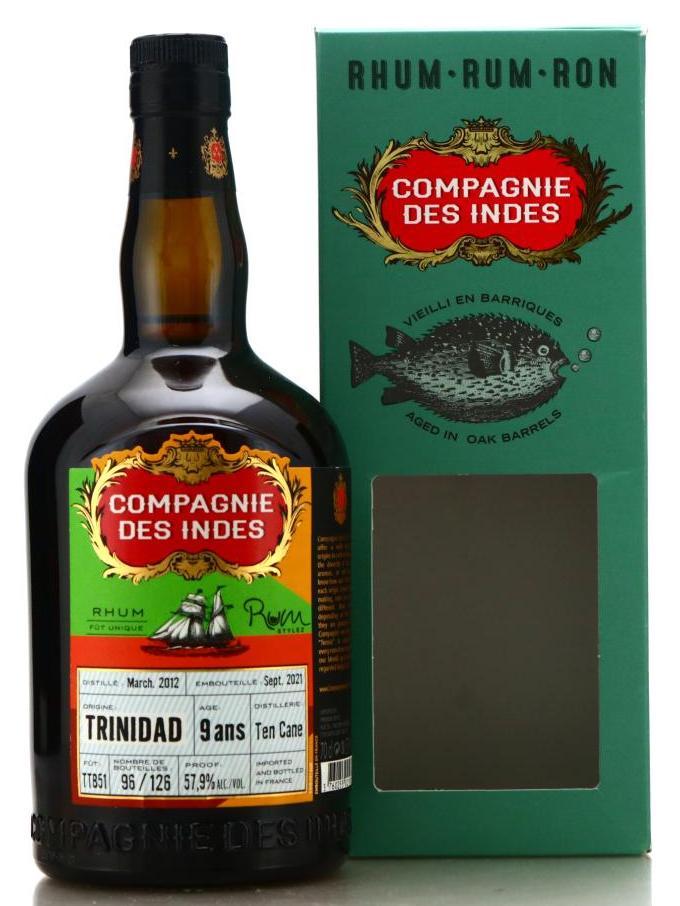 On balance, I can’t say the rum impressed me that much (though I’d buy it if the price was right). It’s a decently made product with a nice series of aromas and tastes, yet it remains somewhat thin even at its strength, and overall, it suggests potential more than actuality. Moreover, the profile just doesn’t come together very well, and one gets the impression the various elements of sweet, salt, fruit and what have you, are playing against each other, rather than working together to provide a cohesive tasting profile. It makes the overall experience less, if only for me.
On balance, I can’t say the rum impressed me that much (though I’d buy it if the price was right). It’s a decently made product with a nice series of aromas and tastes, yet it remains somewhat thin even at its strength, and overall, it suggests potential more than actuality. Moreover, the profile just doesn’t come together very well, and one gets the impression the various elements of sweet, salt, fruit and what have you, are playing against each other, rather than working together to provide a cohesive tasting profile. It makes the overall experience less, if only for me.
Although Ten Cane issued rums since at least 2008 when the ageing was a mere eight months or so (I’ve read here and there that some people believe many of the best ones were distilled around that time) they only really started popping out of the woodwork on the festival circuit, online shops and social media ecosystem a few years later. These days one can, with some effort, find indie bottlings by The Duchess, TBRC, Rom Deluxe, Valinche & Mallet, BBR, Cave Guldive, L’Espirit and even Holmes Cay. The original LVMH bottlings have now become auction house listings one sees only rarely, yet, paradoxically, the last one I saw went for £35 in 2024, which even for standard 40% strength, is remarkably cheap compared to the indies. I didn’t pick it up back then, but that doesn’t mean you shouldn’t if the chance comes up again. It’s a good rum in its own right, no matter who makes it or what this review implies.
(#1116)(82/100) ⭐⭐⭐½
Other notes
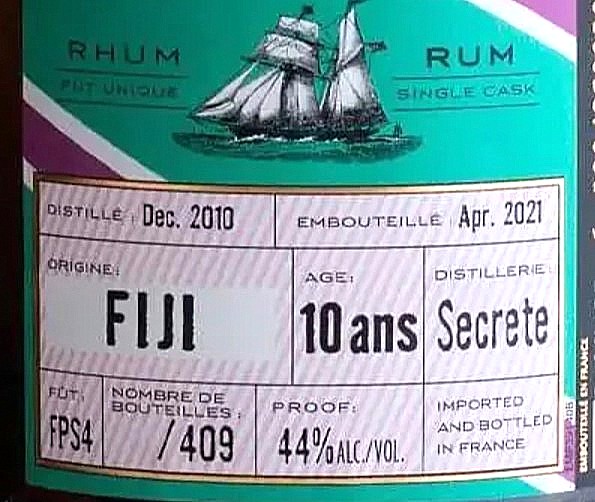
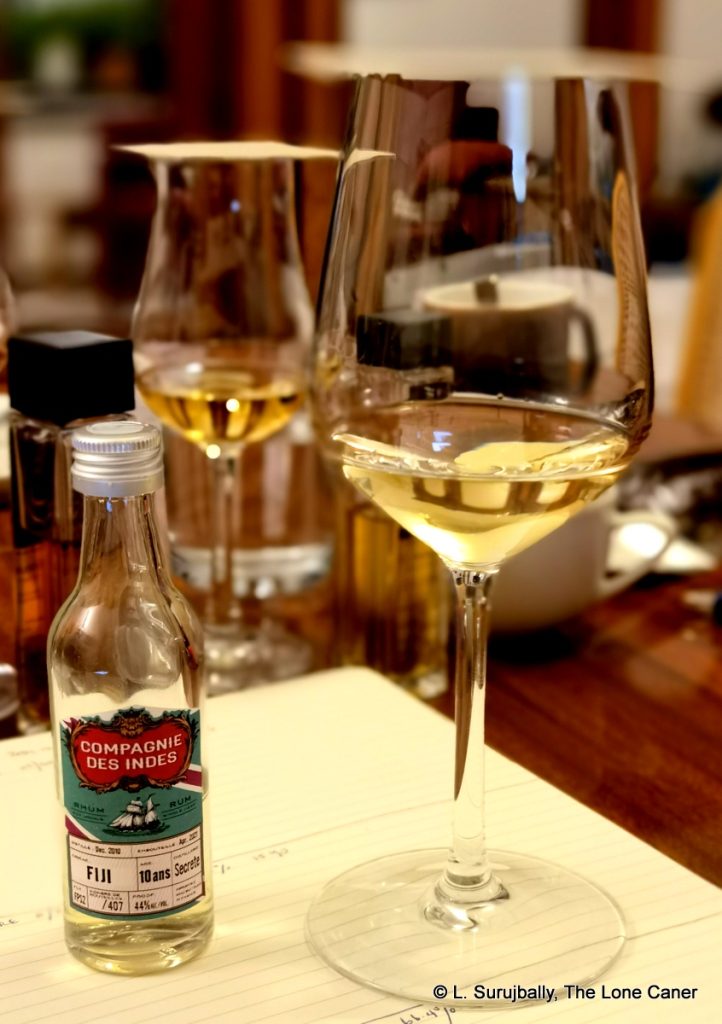
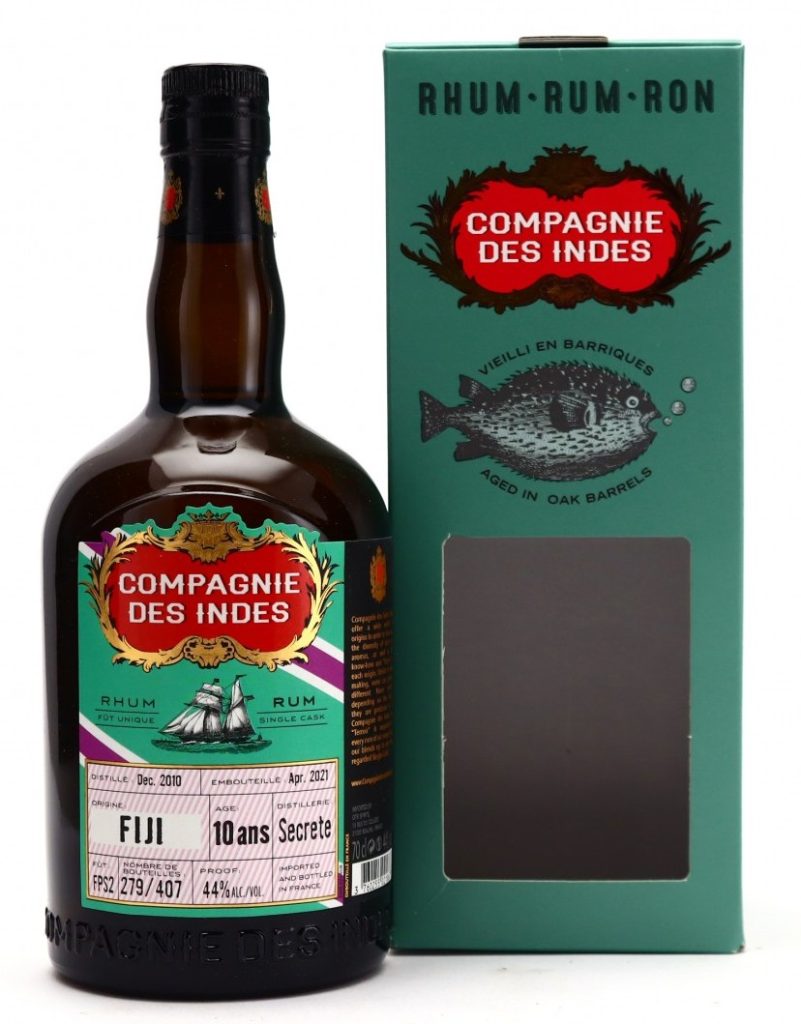
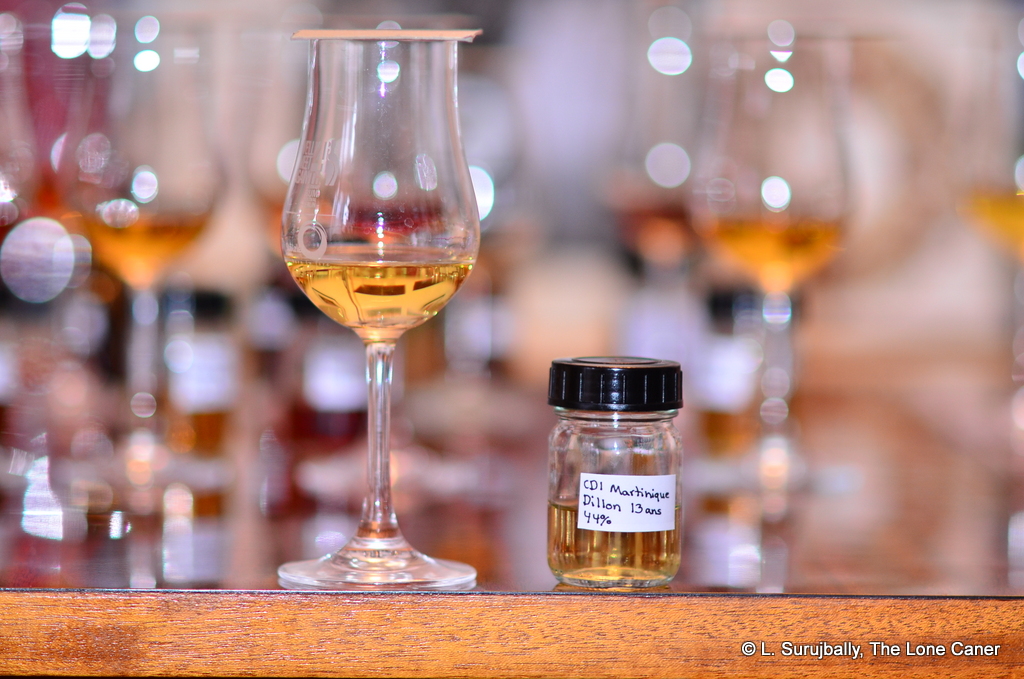
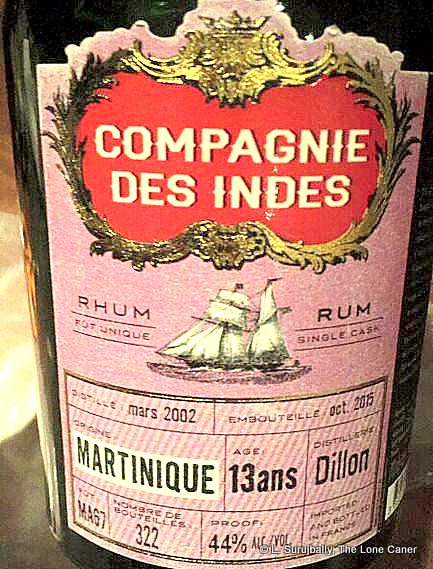 Whatever the case, I must advise you that if you like agricoles at all, those smaller names and lesser known establishments like Dillon should be on your radar. Not all of the rhums they make are double-digit aged, so those that are, even if farmed out to a third party, are even more worth looking at. Just smell this one, for example: it’s a fruitarian’s wet dream. In fact, the aroma almost strikes me like a very good Riesling mixing it up with a 7-up, if you could conceive of such an unlikely pairing. Lighter than the
Whatever the case, I must advise you that if you like agricoles at all, those smaller names and lesser known establishments like Dillon should be on your radar. Not all of the rhums they make are double-digit aged, so those that are, even if farmed out to a third party, are even more worth looking at. Just smell this one, for example: it’s a fruitarian’s wet dream. In fact, the aroma almost strikes me like a very good Riesling mixing it up with a 7-up, if you could conceive of such an unlikely pairing. Lighter than the 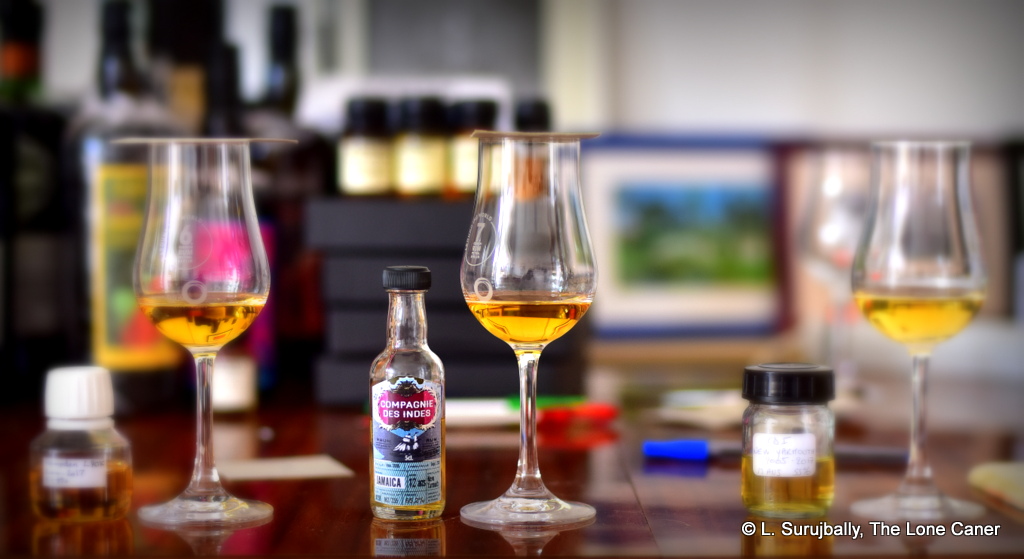
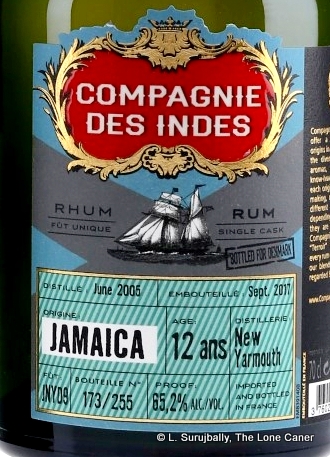 And what a rum it was. I don’t know what ester levels it had, but my first note was “a lot!”. I mean, it was massive. Pencil shavings and glue. Lots of it. Musky, dry, cardboard and damp sawdust. Some rotting fruit (was that dunder they were using?) and also rubber and furniture polish slapped on enough uncured greenheart to rebuild the Parika stelling, twice. The fruitiness – sharp! – of tart apples, green grapes, passion fruit, overripe oranges and freshly peeled tangerines. Florals and crisp light notes, all of it so pungent and bursting that a little breeze through your house and the neighbors would either be calling for a HAZMAT team or the nearest distillery to find out if they had lost their master blender and a still or two.
And what a rum it was. I don’t know what ester levels it had, but my first note was “a lot!”. I mean, it was massive. Pencil shavings and glue. Lots of it. Musky, dry, cardboard and damp sawdust. Some rotting fruit (was that dunder they were using?) and also rubber and furniture polish slapped on enough uncured greenheart to rebuild the Parika stelling, twice. The fruitiness – sharp! – of tart apples, green grapes, passion fruit, overripe oranges and freshly peeled tangerines. Florals and crisp light notes, all of it so pungent and bursting that a little breeze through your house and the neighbors would either be calling for a HAZMAT team or the nearest distillery to find out if they had lost their master blender and a still or two.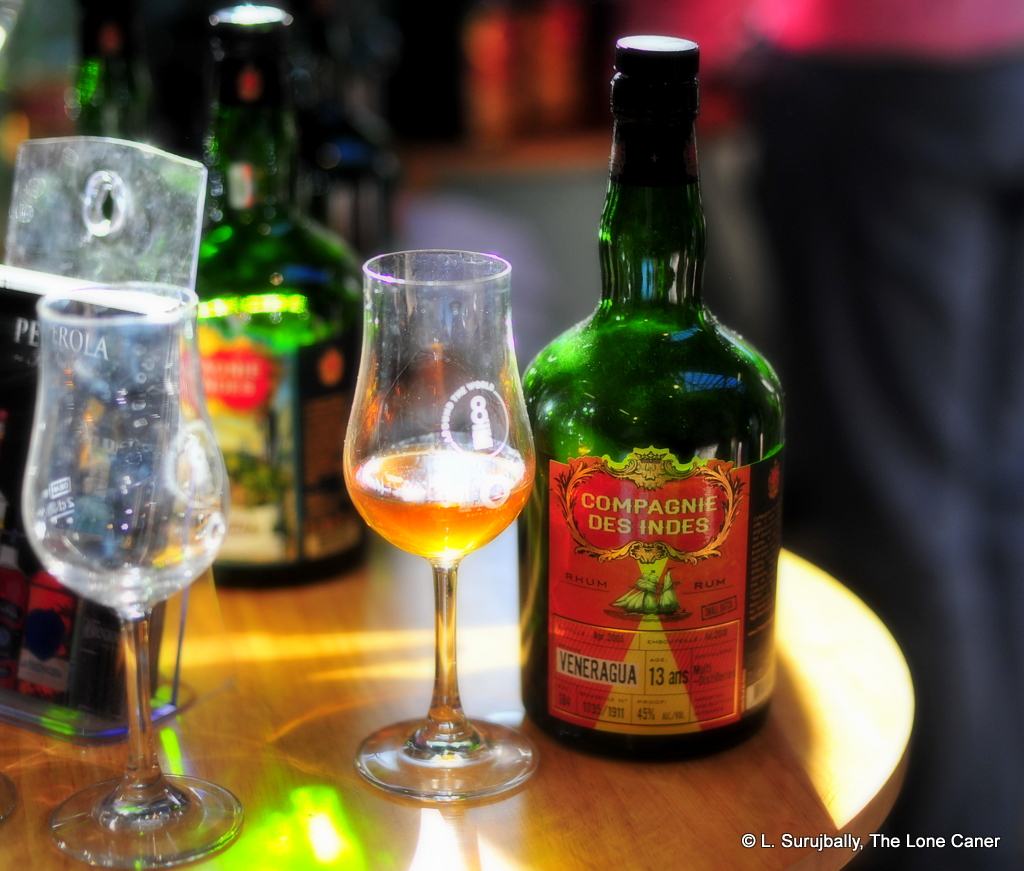
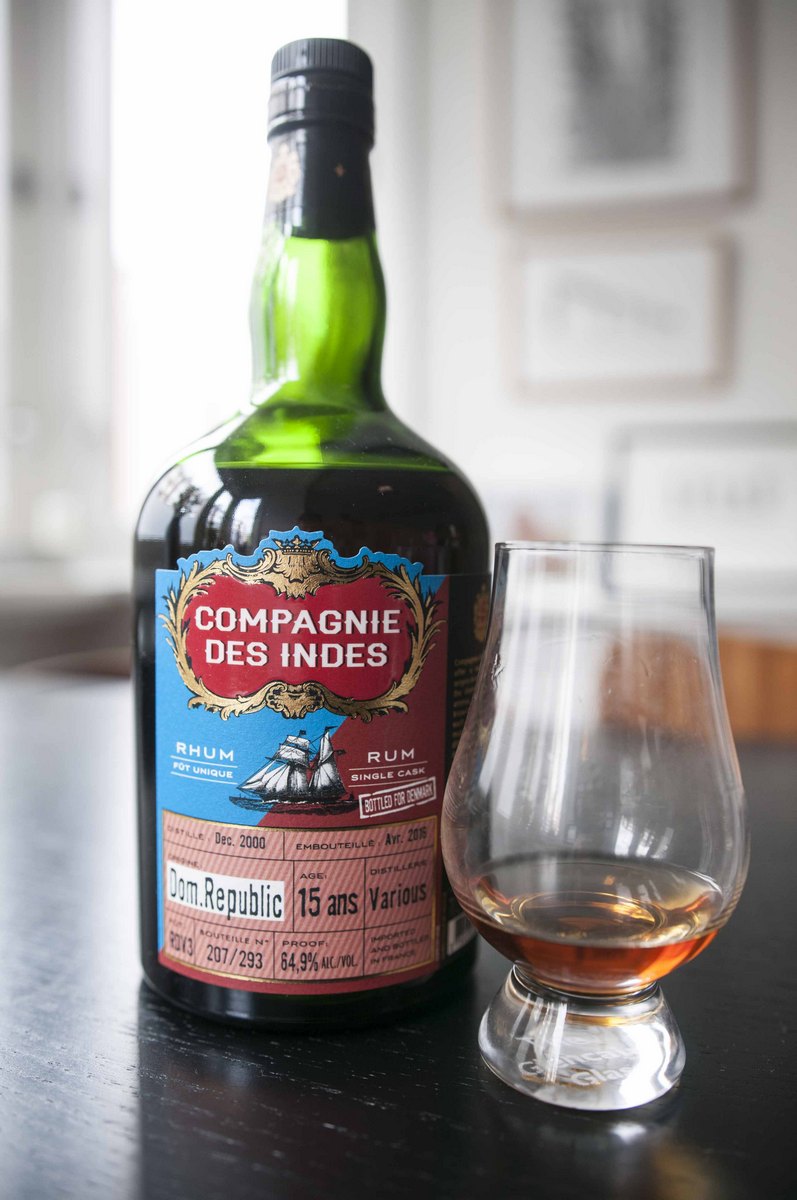
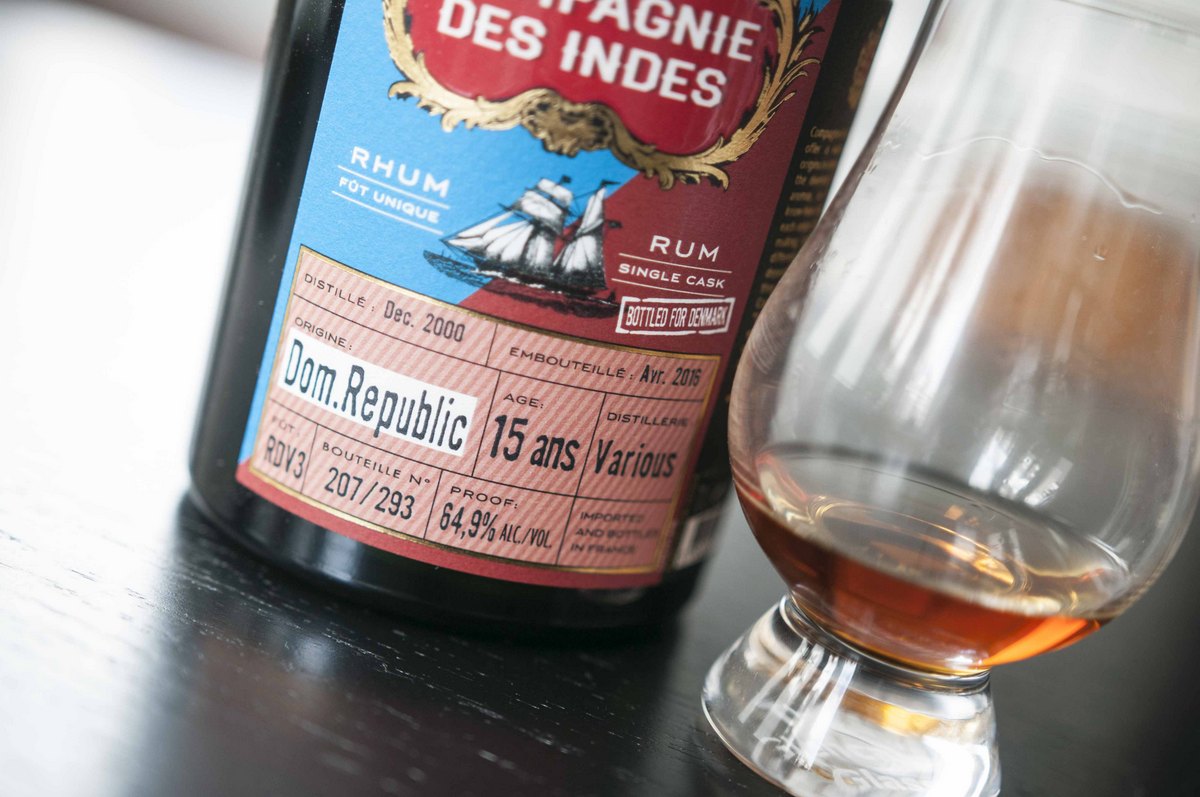
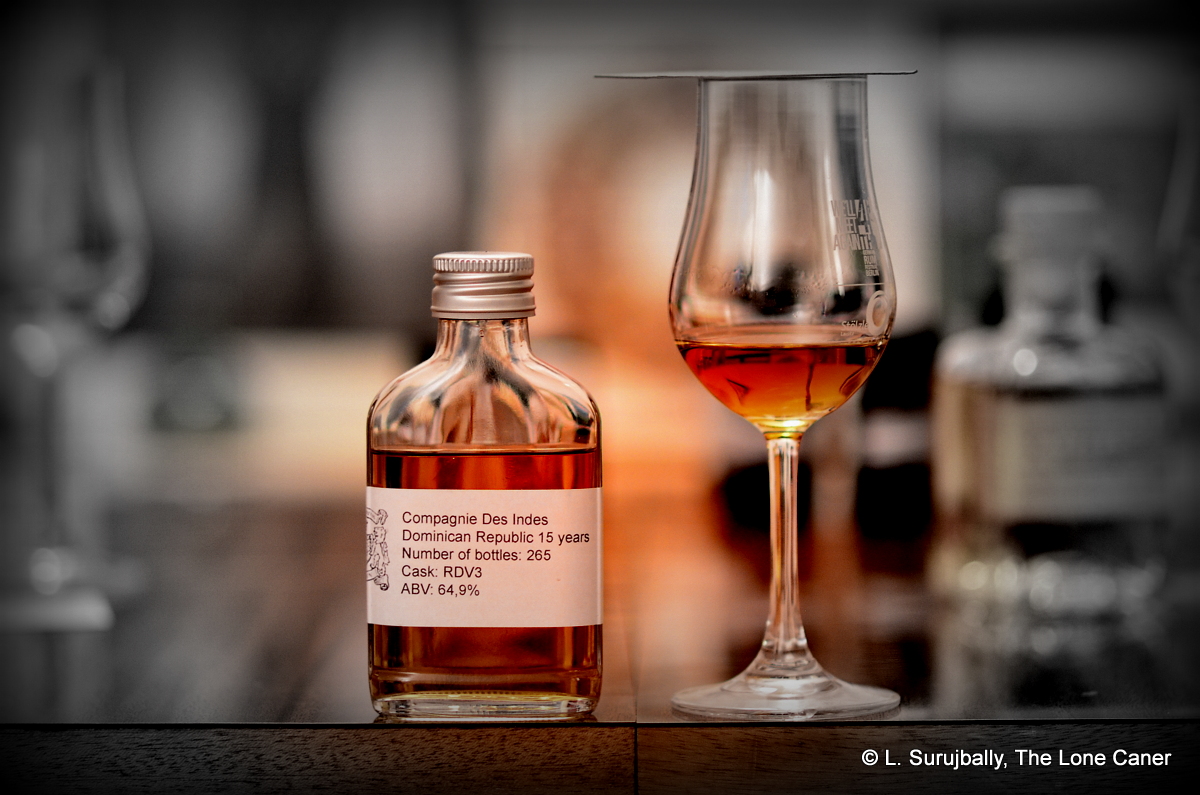
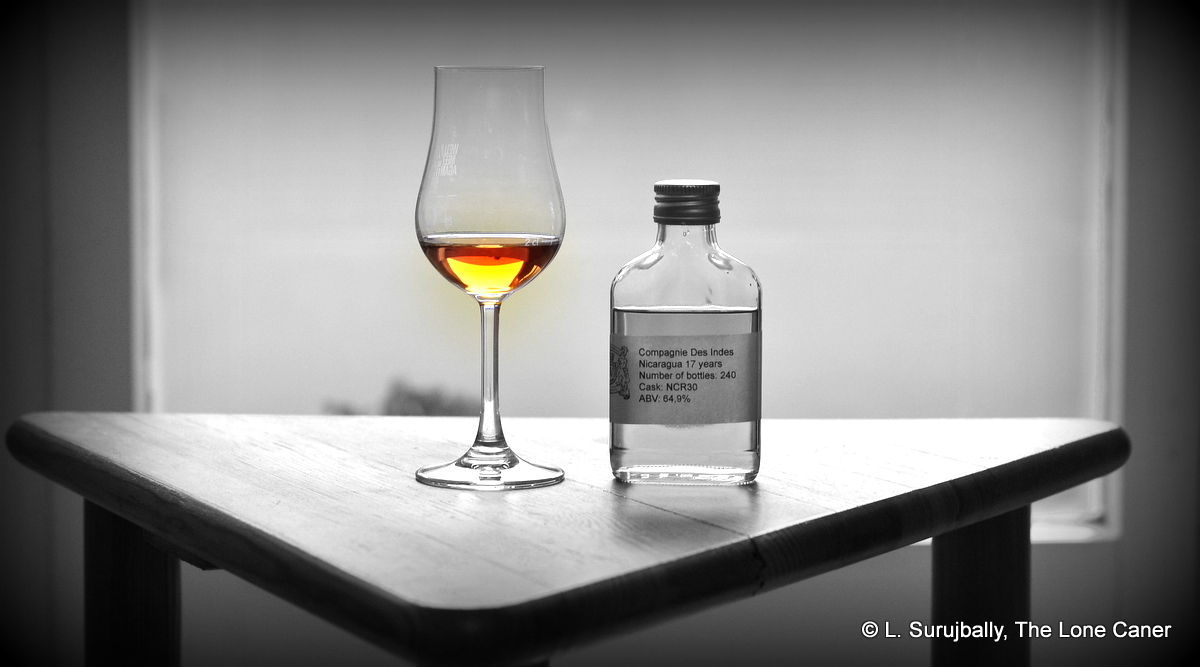
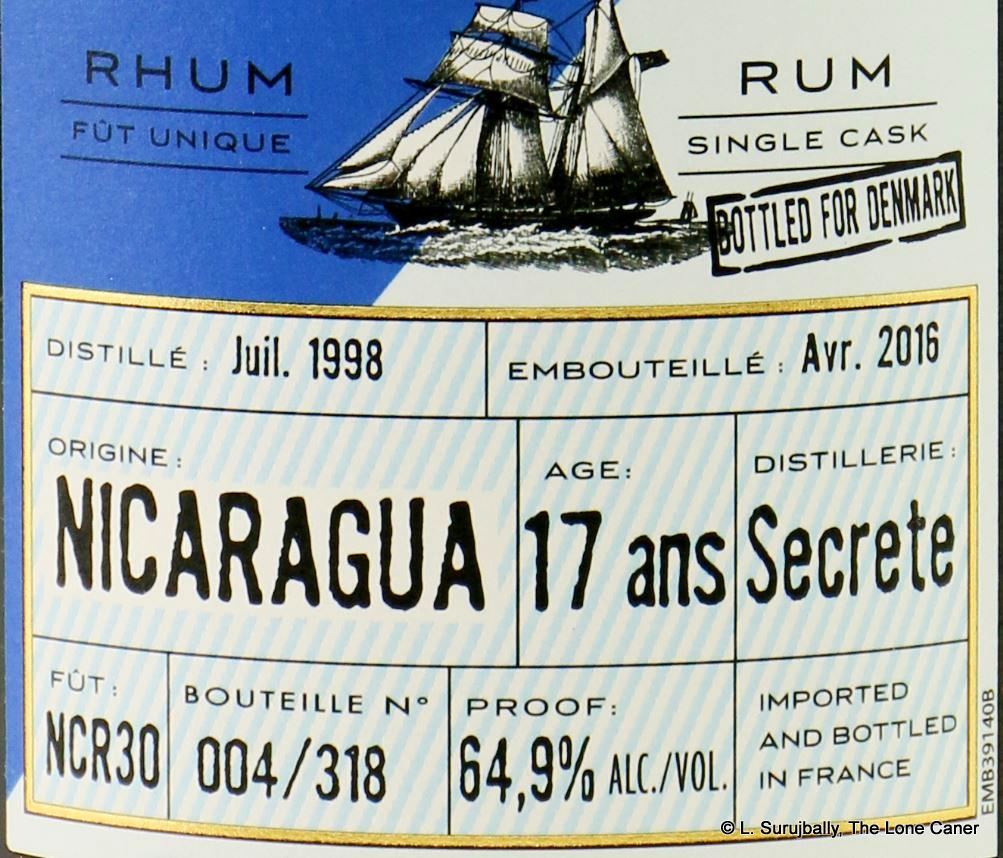
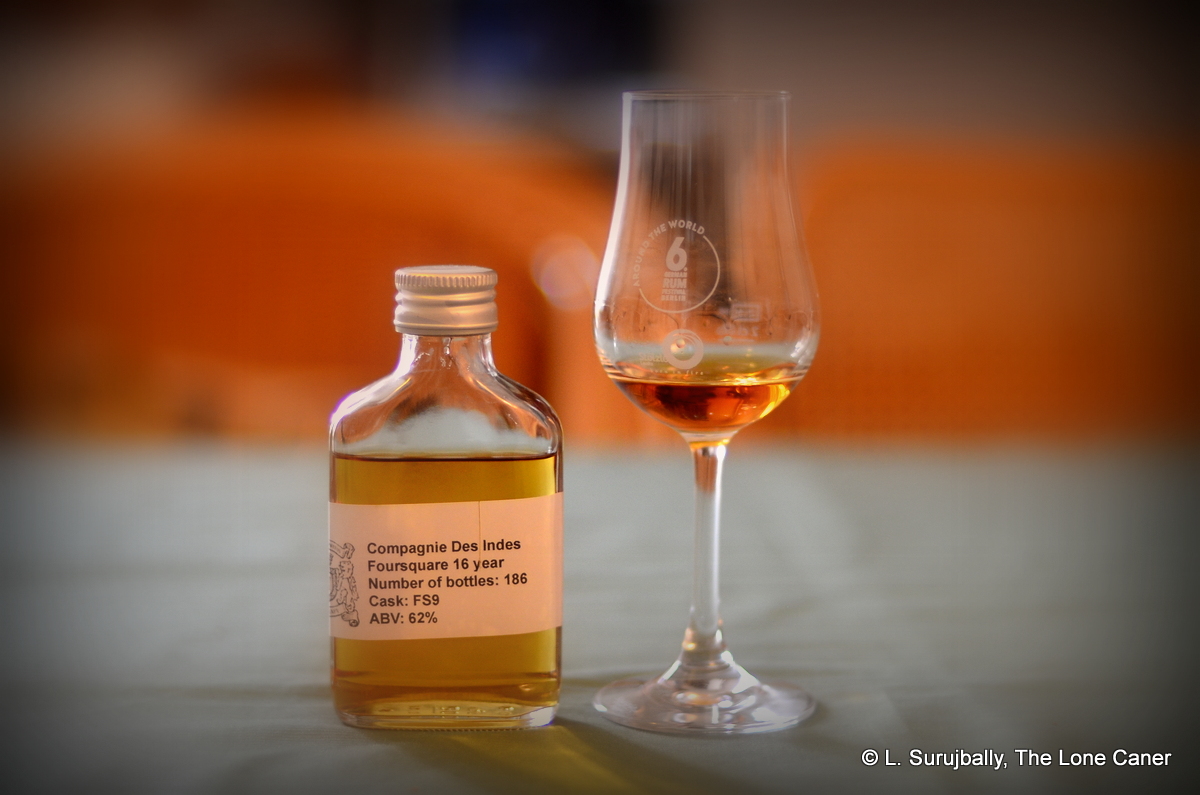
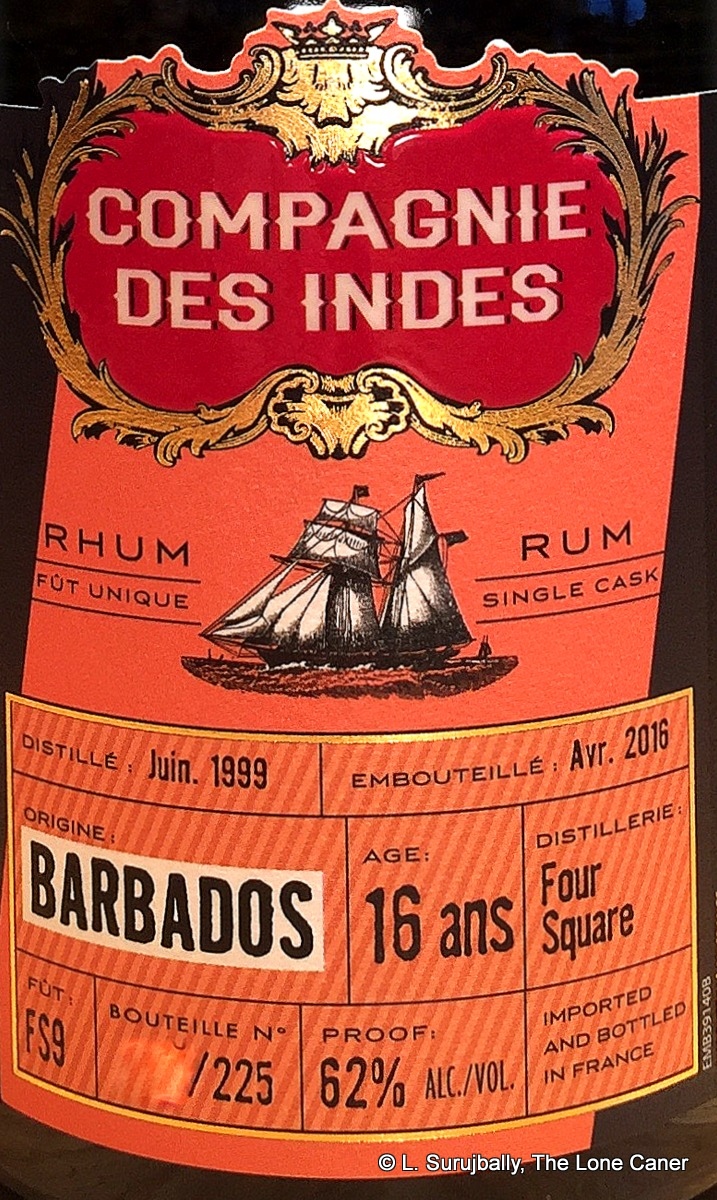 I don’t have any other observations to make, so let’s jump right in without further ado. Nose first – in a word, luscious. Although there are some salty hints to begin with, the overwhelming initial smells are of ripe black grapes, prunes, honey, and plums, with some flambeed bananas and brown sugar coming up right behind. The heat and bite of a 62% strength is very well controlled, and it presents as firm and strong without any bitchiness. After leaving it to open a few minutes, there are some fainter aromas of red/black olives, not too salty, as well as the bitter astringency of very strong black tea, and oak, mellowed by the softness of a musky caramel and vanilla, plus a sprinkling of herbs and maybe cinnamon. So quite a bit going on in there, and well worth taking one’s time with and not rushing to taste.
I don’t have any other observations to make, so let’s jump right in without further ado. Nose first – in a word, luscious. Although there are some salty hints to begin with, the overwhelming initial smells are of ripe black grapes, prunes, honey, and plums, with some flambeed bananas and brown sugar coming up right behind. The heat and bite of a 62% strength is very well controlled, and it presents as firm and strong without any bitchiness. After leaving it to open a few minutes, there are some fainter aromas of red/black olives, not too salty, as well as the bitter astringency of very strong black tea, and oak, mellowed by the softness of a musky caramel and vanilla, plus a sprinkling of herbs and maybe cinnamon. So quite a bit going on in there, and well worth taking one’s time with and not rushing to taste.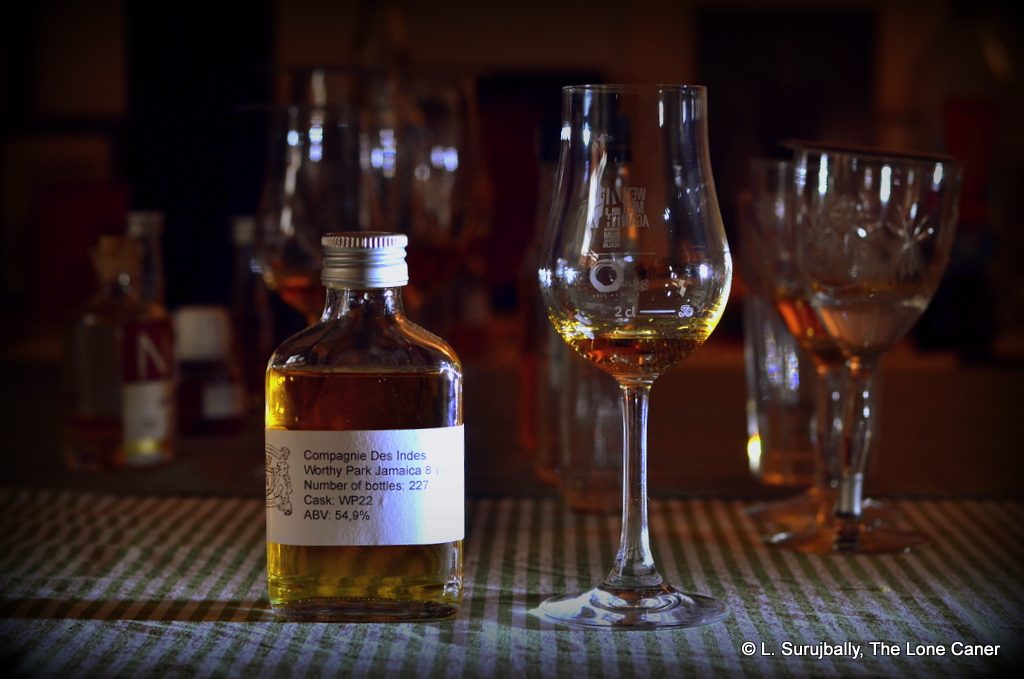
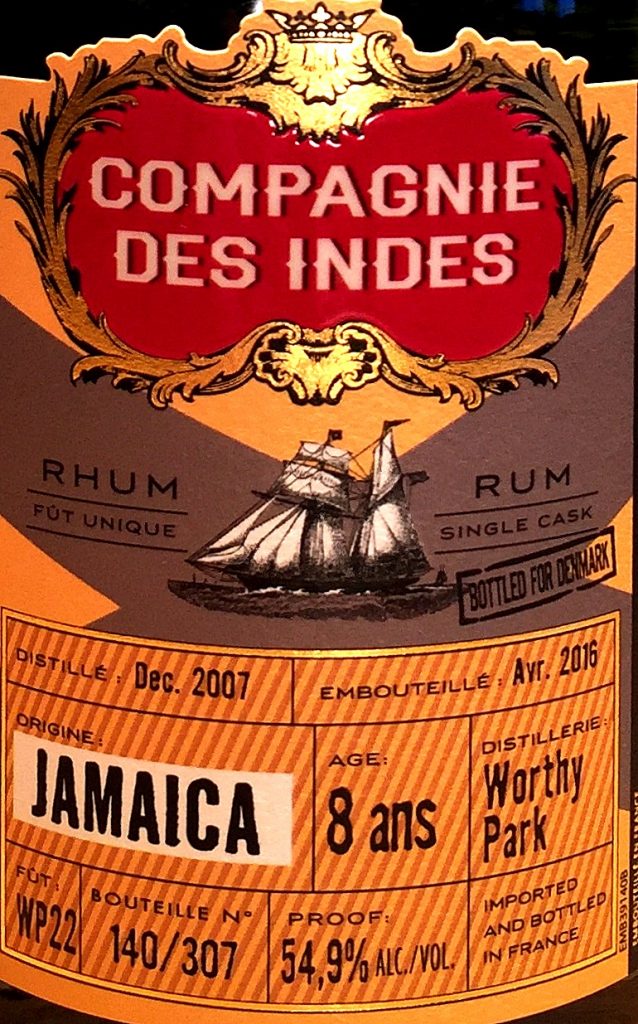 This brings us to the
This brings us to the 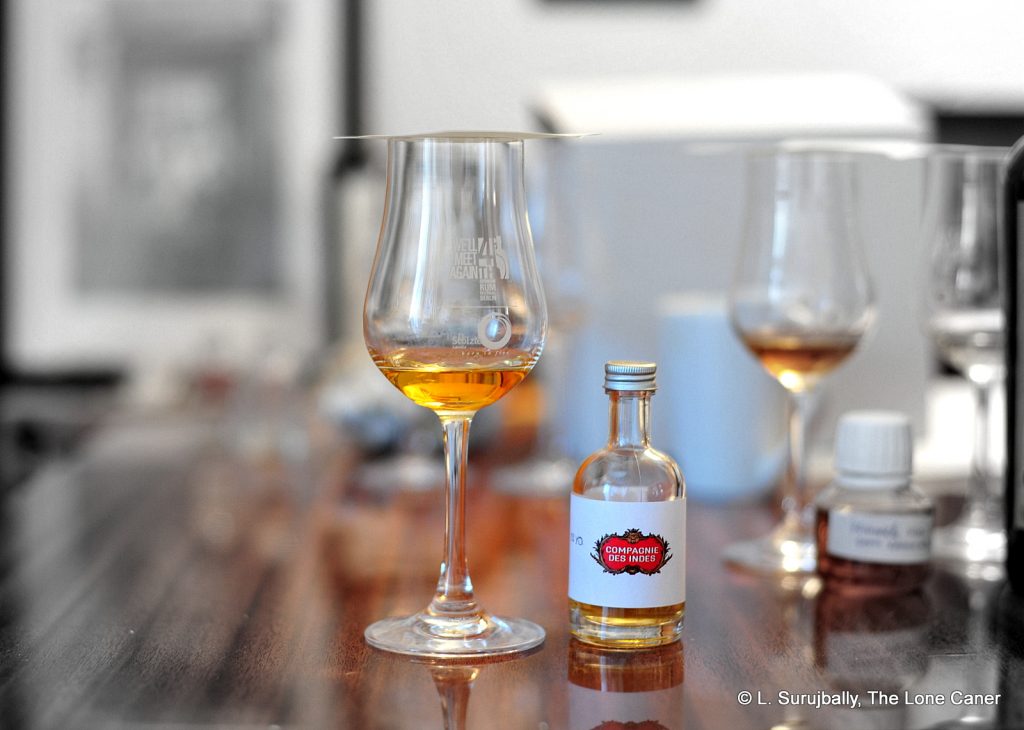
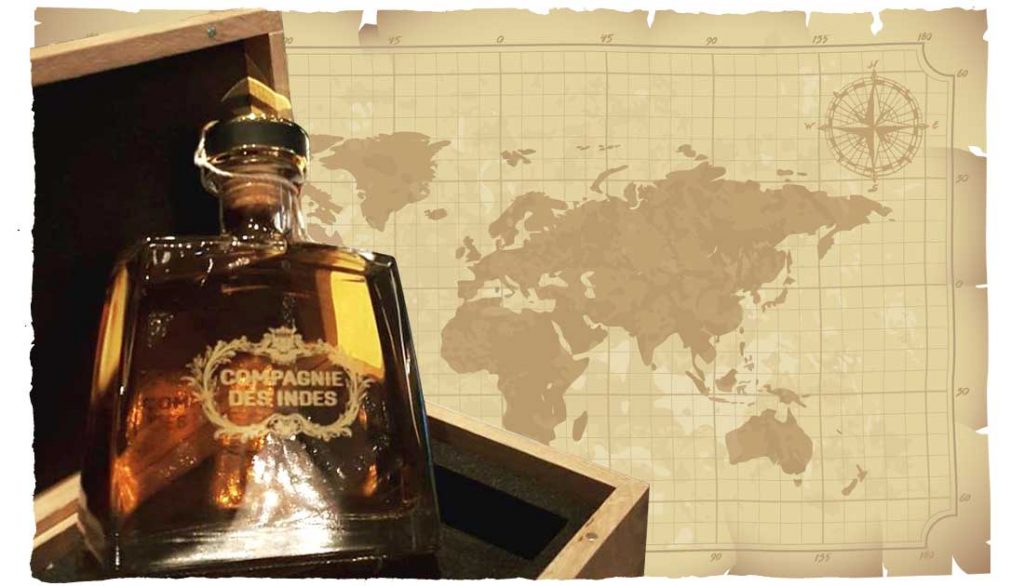
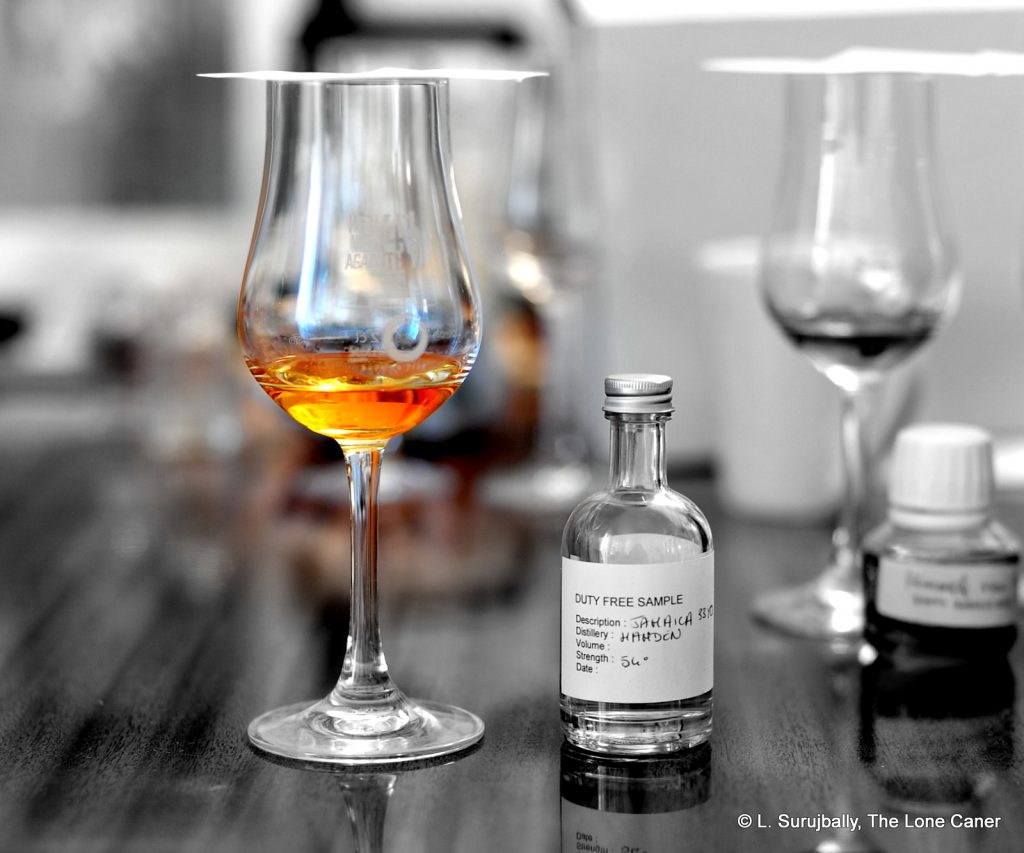
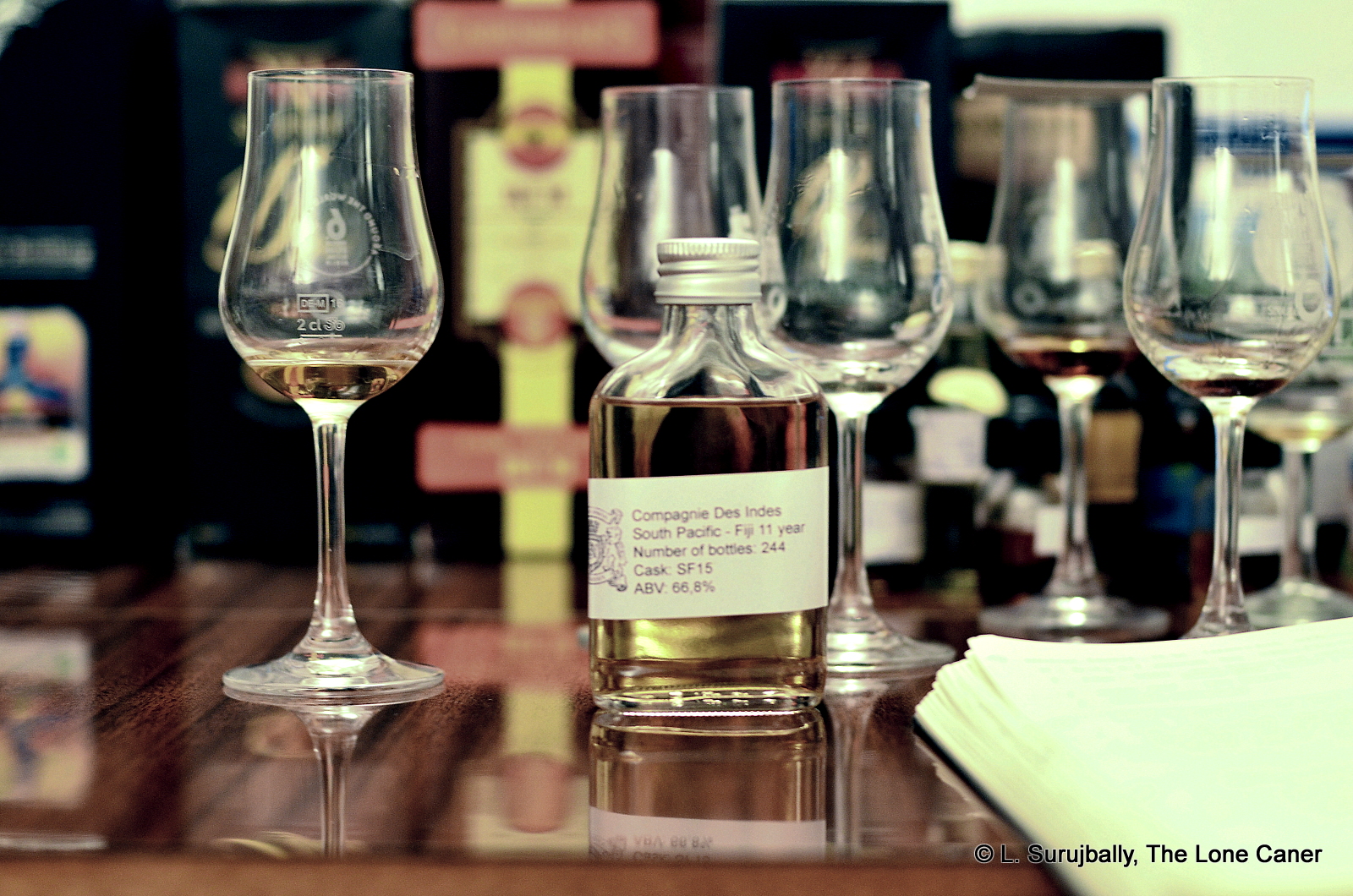
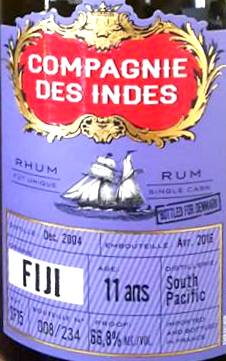 It was obvious after one tiny sniff, that not one percentage point of all that proofage was wasted and it was all hanging out there: approaching with caution was therefore recommended. I felt like I was inhaling a genetically enhanced rum worked over by a team of uber-geek scientists working in a buried government lab somewhere, who had evidently seen King Kong one too many times. I mean, okay, it wasn’t on par with the
It was obvious after one tiny sniff, that not one percentage point of all that proofage was wasted and it was all hanging out there: approaching with caution was therefore recommended. I felt like I was inhaling a genetically enhanced rum worked over by a team of uber-geek scientists working in a buried government lab somewhere, who had evidently seen King Kong one too many times. I mean, okay, it wasn’t on par with the 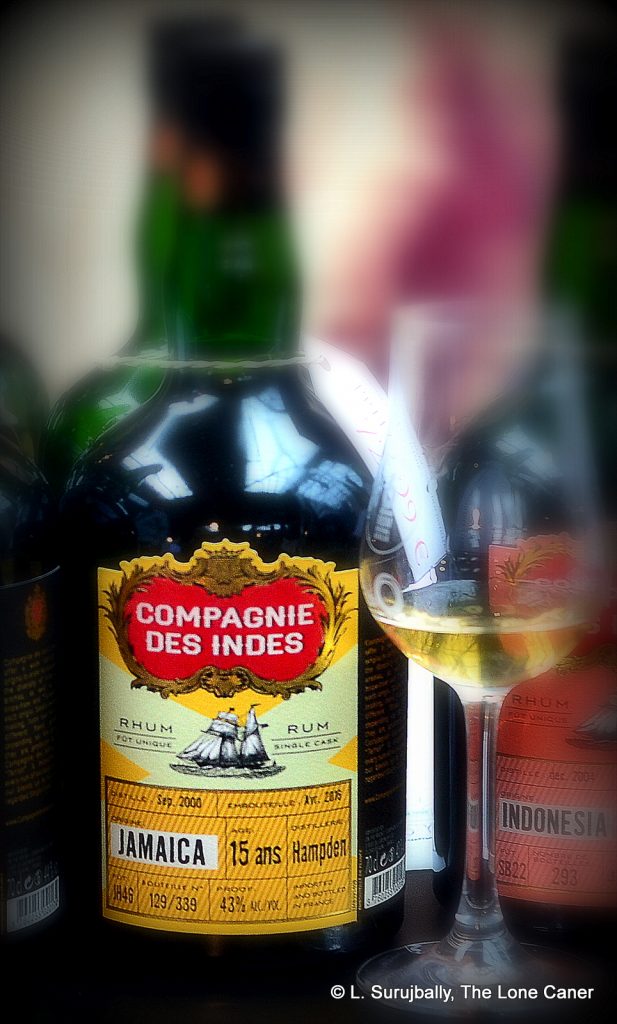
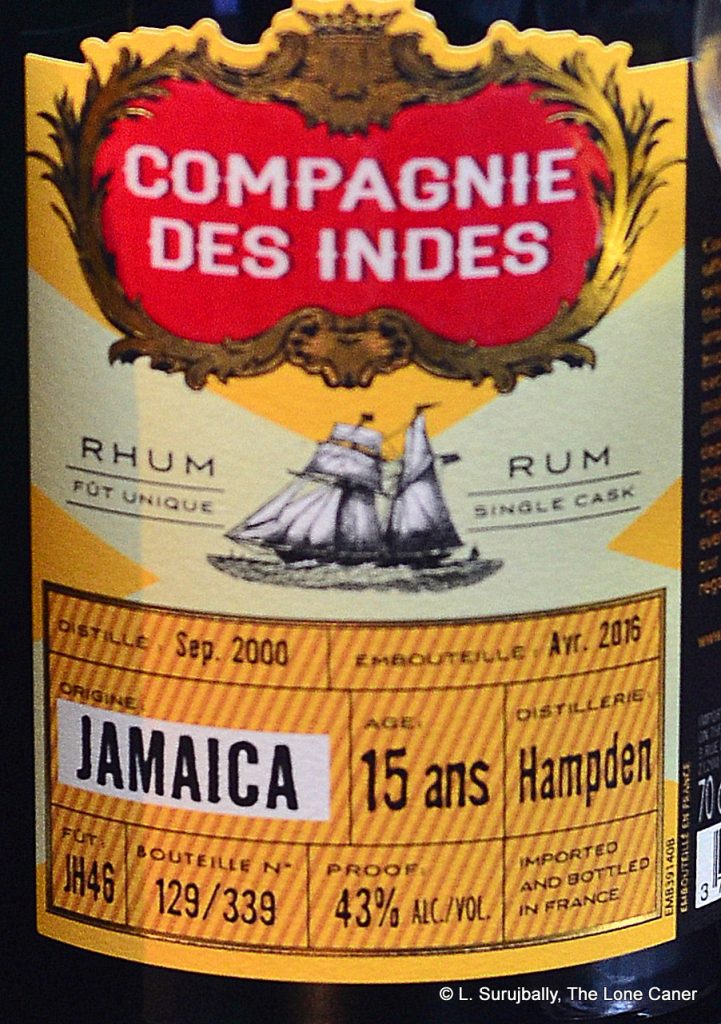 On the palate, I didn’t think it could quite beat out the CdI Worthy Park (which was half its age, though quite a bit stronger); but it definitely had more force and more uniqueness in the way it developed than the Longpond and the Mezans. It started with cherries, going-off bananas mixed with a delicious citrus backbone, not too excessive. After ten minutes or so it opened further into a medium sweet set of fruits (peaches, pears, apples), and showed notes of oak, cinnamon, some brininess, green grapes, all backed up by delicate florals that were very aromatic and provided a good background for the finish. That in turn glided along to a relatively serene, slightly heated medium-long stop with just a few bounces on the road to its eventual disappearance, though with little more than what the palate had already demonstrated. Fruitiness and some citrus and cinnamon was about it.
On the palate, I didn’t think it could quite beat out the CdI Worthy Park (which was half its age, though quite a bit stronger); but it definitely had more force and more uniqueness in the way it developed than the Longpond and the Mezans. It started with cherries, going-off bananas mixed with a delicious citrus backbone, not too excessive. After ten minutes or so it opened further into a medium sweet set of fruits (peaches, pears, apples), and showed notes of oak, cinnamon, some brininess, green grapes, all backed up by delicate florals that were very aromatic and provided a good background for the finish. That in turn glided along to a relatively serene, slightly heated medium-long stop with just a few bounces on the road to its eventual disappearance, though with little more than what the palate had already demonstrated. Fruitiness and some citrus and cinnamon was about it.